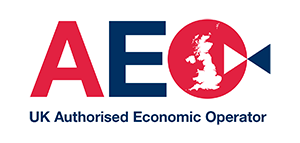
PLEASE NOTE
Unlike CHIEF, CDS does not allow you to change your payment method after your declaration has been submitted. For this reason, your Deferment account or CDS Cash account must be topped up.
Out with the old, in with the new.
The UK Government will be phasing out the existing customs platform, CHIEF, and replacing it with a single UK customs platform, the Customs Declaration Service (CDS).
According to the UK Government, this will occur in two stages:
- Phase One: From 30th September 2022, it will no longer be possible to make import declarations through CHIEF.
- Phase Two: From 1st December 2023, it will no longer be possible to make export declarations through CHIEF.
(Want to know more about how these changes will be implemented? See our no-nonsense article on the topic and avoid CDS-stress.)
While the new changes can seem complicated, getting your head around CDS isn’t as hard as you might think. Especially not with this straightforward guide. ?
So, what are the key differences between CDS and CHIEF?
Let's find out.
Customs Codes
CHIEF, which uses Community Customs Codes, has paper-based rules, whereas CDS uses Union Customs Codes and data processing rules instead.
Procedure Codes
On CHIEF, you can find 7-digit fixed Customs Procedure Codes (CPCs) for each goods item, whereas on CDS, procedure codes (PCs) are split into two-parts for a single goods item - a 4-digit Procedure Code and up to 99 Additional Procedure Codes (APCs), each with 3-digits.
While CHIEF CPCs are unique to one goods item, CDS PCs and APCs vary depending on circumstances.
Data Elements
Where CHIEF requires up to 68 'Boxes' of information to be completed for import declarations (and 45 for export declarations), CDS requires up to 76 'Data Elements' for imports and 65 for exports.
In CHIEF, one box can contain multiple pieces of information. But in CDS, businesses looking to make a declaration must input this information in separate, specific data elements, so it is vital that businesses understand the different data elements prior to making a declaration through CDS.
The data elements are categorised into eight main groups.
1. Message Information and Procedure Codes
(Procedure Codes)
Group 1 Data Elements can cover information relating to the entire declaration or individual items on the declaration, including Procedure Codes and Additional Procedure Codes.
2. References
(Message and document references, certificates and authorisations)
Group 2 Data Elements require information about relevant customs authorisations, previous declarations made for these items and the documents that will accompany the items on the declaration.
3. Parties
(Those involved in making the declaration)
Group 3 Data Elements require information about the different importers, buyers and other members in the supply chain of the goods from exportation and importation to their CDS declaration.
4. Valuation information and Taxes
(Value of goods)
Group 4 Data Elements keep the customs authorities informed about how you are valuing the goods in order to ensure that the correct customs value of the goods has been established, therefore guaranteeing that the correct VAT and duties are calculated.
5. Dates/Times/Periods/Places/Countries/Regions
(Important times, dates and locations)
Group 5 Data Elements require you to input relevant information about which countries were involved in the supply chain for these imported goods, including where they originate, where they were loaded for shipment, where they were shipped from & to and the final destination of these goods.
6. Goods Identification
(Identifying specific goods through codes)
Group 6 Data Elements require information about the quantity of the goods being imported, the weight and size of the packages, and what the goods are; allowing Customs to compare the identity of the goods being imported with the commercial documentation accompanying those goods, and to ensure that the correct duty rates have been applied.
7. Transport Information
(Means, Modes and Equipment)
Group 7 Data Elements requires you to identify the type of transport used to carry goods through specific points in the supply chain, from point of export in a third country through to arrival at the location where import formalities will be carried out.
8. Other
(Any tariff or statistical data and guarantees)
Group 8 Data Elements require information relating to any relevant miscellaneous information about the declaration that cannot be input elsewhere on the declaration. For example, how are unpaid customs duties being secured? Are any licences being written off?
How should businesses prepare for these changes?
The replacement of CHIEF will occur slowly and in several stages.
While there is plenty of time for businesses to prepare, those that start sooner rather than later will experience a much smoother transition when the time comes.
To prepare, businesses need to stay aware of the upcoming changes and understand what they mean. But becoming a CDS expert doesn’t have to mean spending hours and hours reading confusing, conflicting information.
That’s where we come in.
Over the next few months, CustomsLink will be keeping our clients up-to-date with all the relevant CDS news, and providing actionable advice to help your business handle this transitional period.








